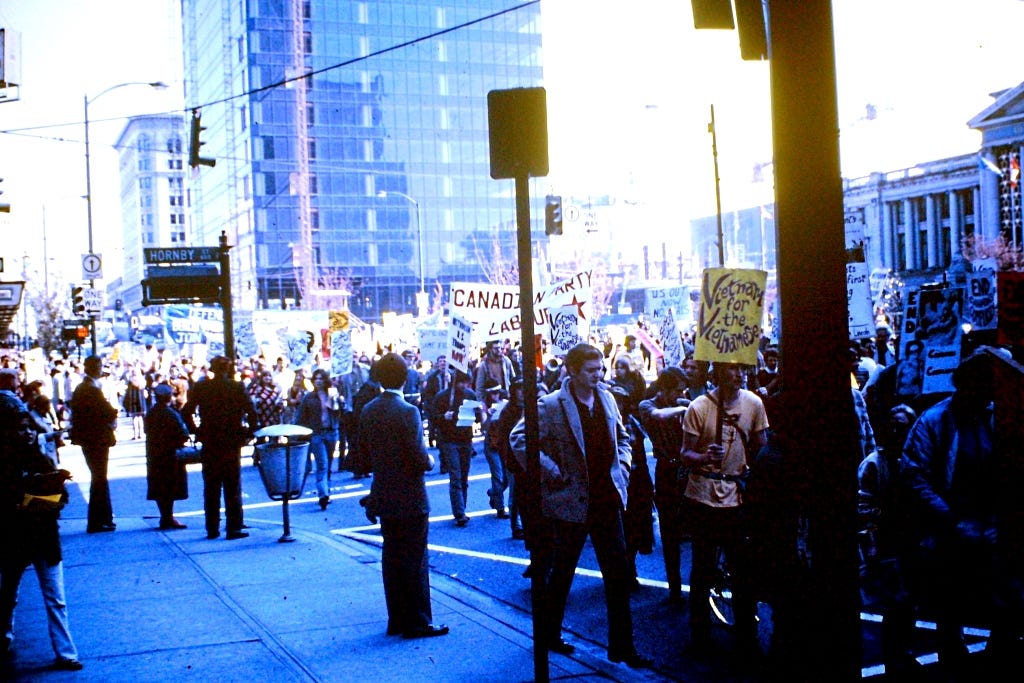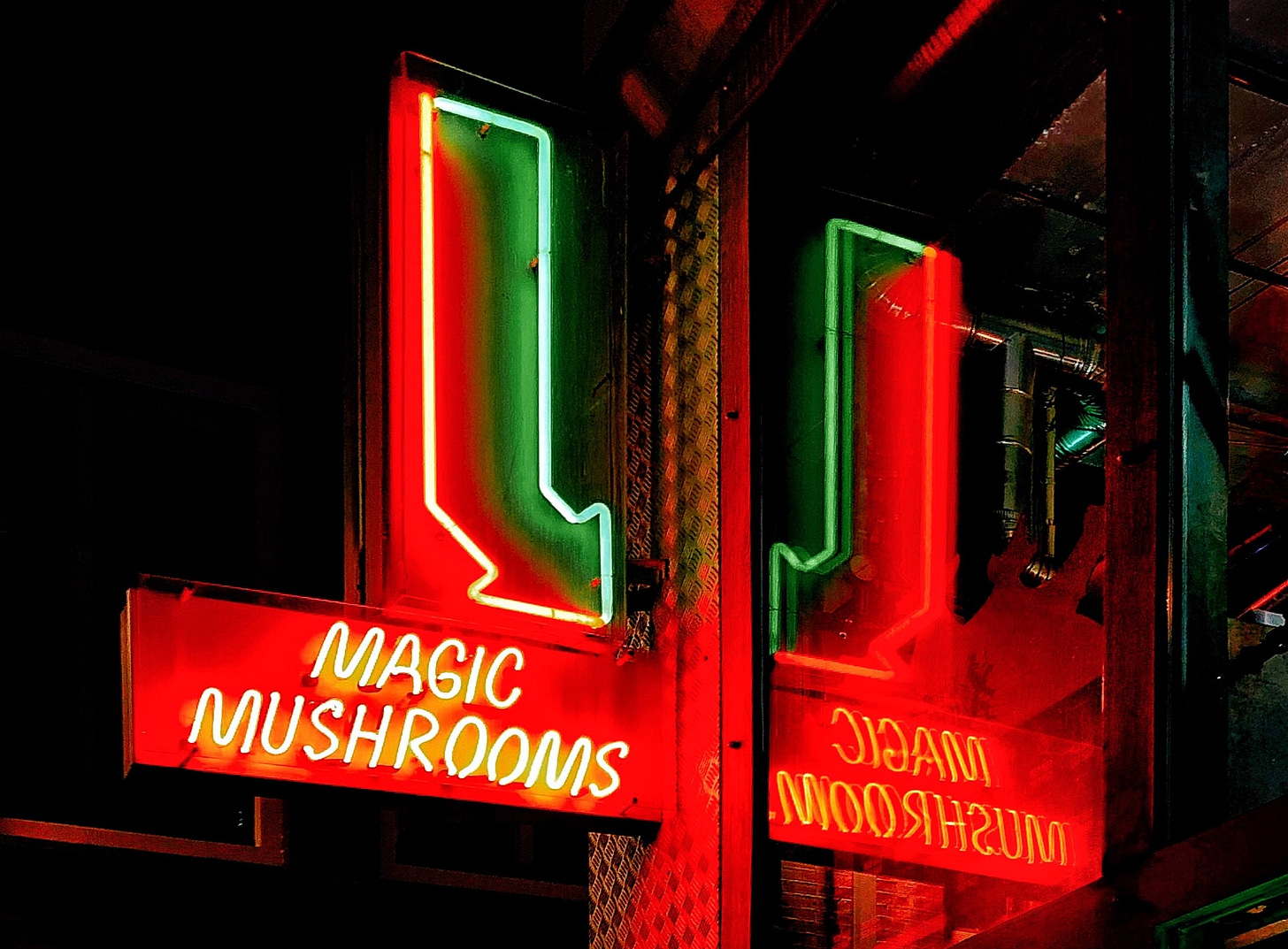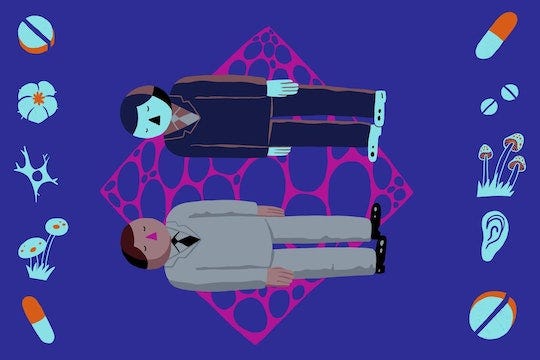Champignons of Health?
On psychedelics and mental health, where it seems like we (people with brains) have been prevented from accessing potentially effective treatments for no reason other than "government people scared"
Welcome to September, everyone! And welcome to another edition of the Amateurist. I’m definitely taking advantage of the slow on-ramp to the fall semester and squeezing in some reading and writing before the realities of full time classes and work hit with full force.
It’s been a few weeks since we were here together, and a few years before that! I took time off from publishing to divert attention toward some other exciting and necessary things (moving! returning to school! gender affirming care!), all of which have had tremendously positive impacts on my life. We can care for ourselves even if it’s daunting!
Briefly,
My name is still Nat, but now it’s short for Nathaniel
Please use they/them pronouns for me, but if that’s a challenge he/him is fine
“Going back to school” refers to kinesiology school - I get to do science! I’ve been enjoying learning human anatomy and physiology so much that (surprise, surprise), the college now pays me to tutor other health sciences students
Needless to say I’ve really missed doing these deep dives with you all.
Since it’s been an extremely offline era, I’ve been catching up on some reading from the folks at Massive Science. Sadly, they called it quits after 2021 thanks to the notoriously inhospitable publishing environment, but their archive remains at https://massivesci.com/.
One piece that caught my attention was a report called Opening Our Minds, a collaboration between five neuroscientists on the roots and clinical potential of psychedelics in treating mental illness. I want to unpack it a bit here and draw some connections between psychedelic research itself and the necessary sociopolitical climate that must be present to achieve positive community health outcomes.
Let’s go.
In Chapter 3 of Opening Our Minds, McGill University’s Lauren Mackenzie Reynolds explores how certain drugs are categorized. In the late 60s and early 70s, an unsurprising confluence of social conditions and political climates contributed to a blanket prohibition of drugs like psilocybin (from magic mushrooms) and LSD, first in the U.S. and then throughout the United Nations. Psychedelic drugs ended up as Schedule I substances (highest level of control, highest associated penalties), while others like morphine and cocaine are Schedule II drugs despite their significant addictive potential.
It all starts in 1943 with scientist Albert Hoffmann of Sandoz Laboratory in Basel, Switzerland. This is 25 years after another Sandoz researcher synthesized a chemical called ergotamine from the ergot fungus, which they found worked as an effective vasoconstrictor (makes blood vessels smaller, thus improving circulation through pressure). At that time it appears the lab thought having a circulatory drug was good enough and halted further research with that.
So it’s wartime and Sandoz had shelved Hoffmann’s new ergotamine derivative, Lysergic acid diethylamide (LSD) after labelling it “uninteresting” following testing on respiration and circulation in animals. Hoffmann, however, wanted to test it further.
In a laboratory misstep that’s only entertaining because it turned out fine, Hoffmann accidentally ingested a minuscule amount of LSD while he was re-synthesizing more of the substance to conduct further tests. The psychedelic properties and colourful hallucinations demonstrated to him that there was, in fact, something to his hunch. Hoffmann then embarked on self-experimentation with varying dosages, the first of which was about 10 times higher than the future recommended dose, which led him to attempt a midnight bicycle ride at the peak of WWII. He was fine, and this might be where the phrase “bad trip” originated.
But the most significant observation Hoffmann made during his “trips” was a consideration of the self: sometimes a distortion, sometimes a sense of profound clarity. Hoffmann’s research piqued the interest of Sandoz once again, which secured the patent in 1947 and availed it to researchers primarily in the field of psychotherapy.

By the late 50s, LSD had a prominent position as a high-potential pharmacological treatment for a host of psychological diagnoses, but the 60s brought sociopolitical conditions that ultimately spelled the end of LSD’s recognized therapeutic potential. High-profile artists, authors, and researchers promoted recreational use of LSD, touting its ability to “open the mind,” while negative (and incorrect) press about bad trips, destructive side-effects, and the dangers of rebellious youth tanked public opinion. It appeared that a page had turned on LSD, and on Sandoz, in terms of the feasibility for continued financial support for research. Even if they did make an effective drug, it seemed no one would import it for sale, lest they be labeled as anti-establishment.
Sandoz’s patents for LSD expired in 1963 and they shut down production soon after, unable to compete with the cultural shift and resulting unprofitability in the larger research and treatment markets. By 1965, the United States Congress virtually shuttered psychedelic research with very few exceptions (see: MKUltra), and in 1968 they banned LSD altogether with the precursor to the Controlled Substances Act, then known as the Comprehensive Drug Abuse Prevention and Control Act.

The late 60s were a maelstrom of cultural turbulence. We’d need a whole other publication to get into it all, but here let’s focus on the Nixon administration’s attack on drug users as a window into how the public understands drugs.
In an effort to clutch at the receding power after the wins of the civil rights movement and the profound shifts in social convention that sprung out of the decade, Nixon ran on a platform of winning the “war on drugs” to return the social fabric to the good old days.
Said Nixon’s domestic policy head John Ehrlichman in a 1994 interview:
"The Nixon campaign in 1968, and the Nixon White House after that, had two enemies: the antiwar left and black people. You understand what I'm saying? We knew we couldn't make it illegal to be either against the war or black, but by getting the public to associate the hippies with marijuana and blacks [sic] with heroin, and then criminalizing both heavily, we could disrupt those communities. We could arrest their leaders, raid their homes, break up their meetings, and vilify them night after night on the evening news. Did we know we were lying about the drugs? Of course we did."
The Nixon administration’s policy directives focused on dismantling powerful countercultural forces under threat of, well, force. Another feature of this approach (not a bug, to them) is the ability to double down on existing functions of state control like surveillance and policing of minority communities, while promoting an agenda painted as moral and temperate.
Within the discussion of drug policy are two opposing approaches, among many at various points on the political spectrum:
Criminalization: making it illegal to use, possess, and/or sell certain substances; punishment by incarceration possible. Enforced by police.
Harm reduction/decriminalization: drug possession permitted for personal use; supervised safe use sites, needle exchange programs, safe supply available. Overseen by medical personnel and community-based harm reduction staff.
Criminalization is certainly the policy of most states today, though the rise of the harm reduction/decriminalization model is well documented in certain jurisdictions since the early 2000s.
But returning to Nixon’s (and subsequent presidents’) “war on drugs,” here’s where U.S. drug policy isn’t just U.S. drug policy; it’s a set of social controls created for the purpose of coercing a subset of the population. Half a century of moral drug panic has created an education gap about what substances the public sees as dangerous and which ones they don’t.
Lauren Mackenzie Reynolds: Among young adults, the perceived risk of trying LSD once or twice in their lifetime is higher than that of binge drinking weekly, in stark contrast to the actual biological risks. This discord between perceived and actual risks is especially striking considering that serious side effects from LSD are extremely rare, while alcohol directly contributes to 88,000 deaths per year in the US alone.
The country also has undeniable influence over legislation around the world, through the United Nations, by economic power, and through other types of imperial force than then influence other countries in similar ways.
The timeline on the worldwide crackdown on psychedelic drugs points to the United States’ position of power in the area of drug control and enforcement beyond its borders:
1970: the U.S. Congress passes the Controlled Substances Act, creating five classes (or schedules) of drugs, ordered from 5 (least dangerous) to 1 (most dangerous). Psychedelics were categorized as Schedule I substances at this time.
Since Congress passed this law, it also is the body that can amend it (like changing penalties for use/possession and changing a specific drug’s classification).
1971: the United Nations invokes a treaty to ban drugs, including psychedelics, across all member nations. The U.N. Drug Control Conventions use a similar ranking system as the U.S., only with four schedules instead of five.
Psychedelics are a Schedule I drug by U.N. standards as well, requiring “high abuse potential and no therapeutic value.”
U.N. conventions are closer to recommendations than laws, so there is an enormous variance between individual nations’ applied drug policies (the difference between Malaysia, for example, where distribution can result in the death penalty, and Portugal, where possession and use of Schedule I drugs under a certain quantity has been decriminalized altogether since 2001).
It’s only one piece of data and yet, in the larger picture of worldwide drug action, represents a turning point in how states understood drug use: who uses drugs, under what circumstances, what drugs they use, and how those drugs affect a person’s internal and external experiences with their environment.
The bottom line: governments and international bodies reacted to the recreational use of psychedelics with the same vigour that it responded to “disruptive” countercultural groups (anti-war protesters and civil rights advocates in particular). Police them, surveil them, create misleading narratives about them, destroy the social frameworks that support their survival.

We’re approaching 60 years past the criminalization of psychedelics and the shutdown of related pharmacological research. I’m not usually in the “woulda, coulda, shoulda” camp, but I can’t help but wonder where mental health treatments would be had the lid not been pressed back onto the can of ‘shrooms in the 60s.
I’m thinking about the breakthroughs in antipsychotics, in HIV/AIDS prophylaxis, and cervical cancer prevention, all of which emerged in the 1990s or later, and they have each had monumental impacts on public health, not to mention individual health outcomes. The roots of those advancements are decades old; we might be waiting another twenty or thirty years for the fruits of current research to arrive.
Some gentle loosening of the blanket ban has happened over the last decade in North America (research on psychedelics in Europe returned in the late 90s, with Switzerland engaging in limited psychotherapy treatment). Institutional fact-finding studies have come out of Toronto-based Centre for Addiction and Mental Health (CAMH) and Boston’s Johns Hopkins that suggest that participants experiencing treatment-resistant depression see symptom relief while on a course of psilocybin, the active component of magic mushrooms. As of July 2022, CAMH is the first Canadian research facility to receive a federal grant dedicated to studying psychedelics’ treatment potential to improve mental health.
In a world where medical progress is most often quiet, slow, and reliant on positive public support from people who don’t know what they’re talking about, any delay in research creates poor conditions for uptake once a breakthrough is found. Psychedelics might be just what the doctor ordered for the next breakthroughs in the field of mental health treatment, or maybe they’re not, but we won’t know before the research is allowed to be done.





